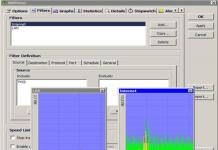Hello everyone, do you know that a processor temperature of 40 degrees is generally normal, but for some people 60 degrees is normal... No? - then this note of the day is for you 😉 Find out what the processor temperature should be!
Many PC users are concerned about the normal operating temperature of the processor, what it depends on and how to measure it. Some of them know that overheating the processor leads to its premature aging, reduced performance and system fault tolerance, but there are those who do not care about this at all, and in vain.
The list of parameters that affect processor temperature is quite large, and not all of them can be touched or measured. This includes the following basic parameters:
- Processor manufacturing technology;
- Processor manufacturer;
- Number of processor cores;
- Processor operating frequency;
- Methods and quality of heat removal.
Manufacturing technology
The technological process of manufacturing PC processors has a long history, and the main efforts of development engineers have always been aimed at reducing the size of the elementary transistor, which represents the main switching element of the processor chip. There can be hundreds of millions and even billions of such transistors in modern processors. It is not difficult to imagine what size the transistor should be. Roughly, we can say that processors have gone from 100 micron technology to 22 nm or less (one nm is just one billionth of a meter!). It is clear that the smaller the area the transistor occupies, the less heat it will generate, in other words, the operating temperature of the processor will decrease.
Processor manufacturer
Today, two global companies are leaders in the production of PC processors: Intel and AMD. Intel's share is about 80% of all processors produced in the world, and AMD accounts for 10 to 20% (the rest is produced by other, less well-known companies). Such a delicate technological process as the production of processors and other microcircuits requires perfectly clean production, and this requires additional investments and increases the cost of the produced microcircuits. AMD has chosen as its main focus the production of budget processors, so the purity of their production is inferior to Intel, although AMD processors are indeed cheaper than their Intel counterparts. But the operating temperature of AMD processors, all other things being equal, is higher than the temperature of Intel processors.
Number of processor cores
A multi-core processor is a processor that contains several processor cores of the same type, implemented either on one chip or on several, but in one package. Of course, when such a processor operates, heat will be generated from each core, so, in general, a multi-core processor should heat up more than a single-core one. But due to the common housing and special thermal protection measures, the amount of heat generated will be lower than the amount of heat generated by each core.
Processor operating frequency
For each processor and for each core in a multi-core processor, the manufacturer determines its nominal operating frequency. This frequency is one of the determining factors in the speed of the processor and the performance of the entire computer system. As the operating frequency increases, the core temperature increases, and as it decreases, it decreases. The operating frequency of the core is determined by the product of the clock frequency generated by the generator on the motherboard and the multiplication factor built into the processor by its manufacturer. An attempt to increase both (called overclocking the processor) leads to an increase in the operating frequency and an increase in its temperature.
Methods and quality of heat removal from the processor
The most common way to remove heat from the processor is to install a heat sink on the processor case, on which a fan is installed to remove heat from the heat sink to the surrounding area. The quality of such heat removal depends on the following factors:
- Reliable attachment of the radiator to the processor body;
- Good thermal contact of the processor case with the radiator housing;
- The ability of a fan to dissipate the required amount of heat.
The reliability of attaching the radiator to the processor case is a topic for a separate article, and other factors require separate consideration.
What ensures good thermal contact between the processor case and the heatsink? This contact should not allow any gaps in this connection that may be caused by irregularities in the processor cover and heatsink pad. To fill such gaps, thermally conductive paste is used. It tends to dry out over time, so the first thing to do when the processor temperature rises is to remove the heatsink along with the fan and replace the thermal conductive paste.
If this does not help, then you need to pay attention to the fan speed. In extreme cases, it may not rotate at all, which “ensures” an increase in the processor temperature. The usual reason for this fan behavior is dried grease (or lack thereof) in the bearings. It is better to remove the fan and drop a few drops of regular machine lubricant into both bearings - upper and lower.
CPU temperature monitoring
There are many different utilities that allow you to monitor the processor temperature. But it is hardly advisable to use programs that continuously monitor the temperature - they will only take up processor time and user attention. You need to access them periodically, just to make sure the processor is working properly. And if suddenly inexplicable drops in computer speed, and even more so, freezes, begin to occur, then it’s time to check the operating temperature of the processor. This is proposed to be done using a modern and unique monitoring program for the entire computer - AIDA64.
Depending on all the mentioned factors affecting the processor temperature, typical values of this indicator can be given for different processors.
- Intel processors - from 30 to 60 degrees Celsius, maximum - about 70. When idle, the usual temperature is no more than 35, and under load it can rise to 60-70;
- AMD processors – from 40 to 70 degrees Celsius. The maximum is about 80. When idle, the usual temperature is about 45; under load it can rise to 80.
You should also take into account that laptops have a rather weak heat dissipation system, so their temperatures, especially with AMD processors, even when idle, can reach higher values... however, you will no longer be afraid of unusual indicators, because you know what processor temperature should be be.
In contact with
Many PC users are tormented by the question: what should the processor temperature be? Sometimes it reaches large values and people worry about whether everything will burn down?! I am very glad that you came to see me. In this article we will try to figure out what temperatures are normal for a processor and in what ways it can be measured.
The central processing unit (CPU) is the brain of the PC and is responsible for processing a large amount of information. And the more information it processes, the more it heats up and its temperature increases accordingly. I want to say that there is a very widespread opinion on the Internet that when buying a processor for a computer, it is better to refuse the BOX option with a standard cooler included, and buy separately and not spare money on it. Unfortunately, at one time I skimped on such an option and on my processor you can easily fry eggs. You should be more prudent and don’t repeat my mistakes.
What should the processor temperature be?
So, what should be the processor temperature of our PC? If we generalize processor manufacturers, we can say that the critical operating temperature of a processor is 100 degrees Celsius. If the temperature is higher, then destructive processes begin in the processor, and sooner or later it fails. On average, the operating temperature of the processor is in the range of 60...80 degrees, and about 40 degrees Celsius when idle.
Some sources say that the normal processor temperature may differ for different manufacturers:
- Intel- when the processor is loaded, its temperature ranges from 60 to 70 degrees Celsius. If the processor is not loaded, its temperature should be about 35 degrees Celsius
- AMD- under load, the processors of this manufacturer are in the range from 60 to 80 degrees Celsius. When idle, its temperature should be around 45 degrees Celsius
Motherboard developers have provided various options for operating a PC and have crammed special sensors to monitor various parameters, including our favorite processor temperature. Most likely, even if you went into the BIOS, you hardly noticed that you can regulate the processor’s power yourself and set it to turn off when it overheats. Some processor models have automatic protection against overheating, but it is still better not to let this happen and regularly clean the system unit or laptops from dust.
Cooling systems
In general, there are three main types of cooling systems:
- Passive
- Active
- Liquid
Passive cooling system- This is a regular heatsink on top of the processor. As you understand, the effect of such a system is not great. Therefore, we immediately move on to the second.
Active cooling system- this is a well-known cooler (radiator + fan). This type is the most common option for cooling the processor. Even on budget computers, the processor is usually cooled by a cooler.
Liquid cooling system- the most expensive and most effective. It is a special pump that drives liquid through tubes connected to the processor. The liquid circulates and takes heat away from the processor. You understand that additional nutrition is necessary for fluid circulation. Typically this type of cooling is used in expensive (gaming) computers.
How to find out the processor temperature?
Two ways come to mind:
- Go into the BIOS and look in the special section
- Using specialized utilities
First option. We go into the BIOS by pressing F2 or Del when loading (different manufacturers have different keys). And find the tab System Health. There will be readings from various sensors, including processor temperature.
Second option. Installing the program AIDA64 or CPU-Z or HWMonitor. And there are many similar options. All these utilities show detailed information about the computer and also information from sensors. And of course the processor temperature.
How to reduce CPU temperature
If you are concerned about the question of how to reduce the temperature of the processor, then you should pay attention to the cleanliness of the cooling system, or simply put, the cooler. They often and thickly become overgrown with dust, and this directly affects the quality of processor cooling.
Personally, from time to time I simply take my home vacuum cleaner, put it on low power and remove all this dust. Usually I don’t even disassemble the cooler. However, for better cleaning, it is worth disassembling the cooler, or at least disconnecting it from the processor.
In the vast majority of cases, this simple procedure helps to reduce the operating temperature of the processor and avoid problems with overheating.
In general, we looked at the temperature - made sure that it was within the acceptable range and calmed down. Otherwise, open the cover of the system unit, disconnect the cooler, place a frying pan on the processor, throw in two eggs, salt to taste and fry the eggs. Don't let the heat go to waste: maniac:. Well, if you don’t have enough heat, you can build one for yourself and warm yourself from it.
Laptop overheating: causes and methods of cooling
And laptops are also susceptible to overheating, in my opinion less so, but the problem still exists. If after 20 minutes of use your laptop gets so hot that you can iron clothes with it, then it’s time to think about cooling the device. Its overheating can cause many problems: slowdowns, increased fan wear and even melting of the motherboard (by the way, new laptops automatically turn off when they reach a critical temperature).
There are many reasons for overheating, but the main ones are:
- Pollution. Dust, lint, and other small objects clog your vents over time. The hot air simply has nowhere to escape, and it remains inside. By the way, this problem often occurs among those who like to place their laptop on their laps or bed.
Thermal paste is dry or missing. It fills the microscopic gaps between the processor and the heatsink. If there is no paste (or it has dried out), then heat transfer is disrupted and the processor simply does not have time to cool down.
Using Applications. If you play new games or run graphic editors on an old device, then get ready for the fact that in 40 minutes you will be able to fry eggs on your laptop. And don't say I didn't warn you!
Laptop Cooling Methods
Before we talk about cooling methods, you need to make sure whether the laptop really needs them. To do this, measure the temperature of the processor and video card using the program. For example, the well-known Aida64 application is suitable. After starting the program, go to the “Computer” tab, then find the “Sensors” item. All the information is contained here (by the way, the program is paid). The processor temperature under load should be on average 85-90 degrees (you can find out the exact numbers on the manufacturer’s official website). The critical temperature of the video card is 100-105 degrees.
There is also a simpler (and free) program called Speecy. To find out the processor temperature, go to the “Central Processing Unit” tab and find the “Average Temperature” option. Information about the video card is indicated in the “Graphics devices” tab. If you find that the temperature is above critical, then proceed to the following steps:
1. Cleaning .
Attention! If you are not confident in your abilities, then it is better to entrust this matter to professionals.
To clean, you need to disassemble the laptop and get to the motherboard. The difficulty is that laptops from different manufacturers are understood differently. For example, in some laptops, to get to the cooling system, you only need to remove the back cover, while in others, you need to completely disassemble the device.
Once the screws are removed and the motherboard is removed, it's time to start cleaning. To begin, clean the cooler and its blades from dust using a simple brush. Then wipe the vent hole, which is located on the bottom cover. The radiator grille (which is located on the left side of the laptop) needs to be blown out. A simple hair dryer with a narrow nozzle (use cold air) or a special compressor that blows air under high pressure is suitable for this. If you are not going to change the thermal paste, you can assemble the laptop.
2. Replacing thermal paste .
First you need to completely remove the remaining old paste. You can use toilet paper for this. Then wipe the surfaces to be treated with a cloth soaked in alcohol and wipe dry. You can start applying.
Attention! Thermal paste is applied in a very thin layer to close the microscopic gaps between the heatsink and the processor (video card). A thick layer of paste will have the opposite effect, and the heat will take longer to escape.
There are several ways to apply the paste:
- Apply one drop and then press the radiator on top. The paste will spread on its own (don't forget to remove any excess around the edges of the processor).
Smear the paste with your finger, plastic card or other flat object. After applying the paste, the laptop can be assembled.
There are several other cooling methods:
Cooling pad. There is some effectiveness in its use, but it is small. The temperature drops by only 3-7 degrees, and the stand takes up one USB port.
Using various applications. Some programs (for example, SpeedFan) can increase the fan speed. The temperature drops slightly, but the coolers wear out faster.
By the way, I advise you to buy goods on Aliexpress with cashback (read discount 8,5% ). So almost everyone buys on Ali, and if you still buy directly (that is, without a discount), then correct yourself and save your honestly earned money. I do this through the official partner of Aliexpress (and at the same time asos, banggood, gearbest and ozon) - EPN.BZ.
To avoid frequent overheating in the future, follow these rules:
- At least once a year, carry out a complete cleaning and replace the thermal paste.
Do not place the laptop on soft surfaces (furniture, carpet) or on your lap to avoid blocking the ventilation openings.
If the laptop is on a table, then place a small stand under it for better air circulation.
Do not leave your laptop on the floor, as all the dust collects in the lower part of the room (20-25 cm from the floor).
These simple tips will help your folding friend not burn out prematurely.
What should the processor temperature be?
I hope that you figured out what the processor temperature should be with the help of this article. Therefore, let me take my leave for today. Good luck! Come again.
The processor is the most important part of a personal computer. It is he who is responsible for his computing abilities. There are “cold” and “hot” processors, that is, energy efficient and not so much. For example, the previously very popular Intel Pentium 4 processor was so hot that you could fry eggs on it. Jokes aside, there really are successful examples on the Internet. A hot processor can cause your computer to slow down and even shut down. That is why in this article I will tell you how to find out the temperature of the processor, what temperature is considered normal and how to reduce it.
Unfortunately, Windows 10 and Windows 7 do not have built-in tools for viewing CPU temperatures. There are some perverted viewing methods, but I won't share them as they are quite inconvenient. Therefore, below I will only talk about the main simple ways to find out the processor temperature in Windows. The easiest option is to install the Core Temp program. It is absolutely free and takes up little space.
 CPU temperature - Core Temp program
CPU temperature - Core Temp program In addition to the processor temperature, the Core Temp program will tell you about the processor model, its platform, current frequency, technical process, revision. In it you can enable overheating protection - set critical temperatures, upon reaching which the computer will turn off or run a command. You can choose simple overheat notifications.
What should the processor temperature be?
Normal processor temperature is a very relative concept. Different processors behave differently. On average, we can say that under load, the temperature of an Intel processor should not exceed 70 degrees, and for AMD - 80. When idle, the processor may be cold - this is normal. Therefore, the question of what the processor temperature should be can only be answered by resorting to average values. In addition to differences in models, the processor temperature is affected by the efficiency of the cooling system. For example, aluminum CPU coolers conduct heat worse than copper ones. Therefore, sometimes copper tubes are installed in them to remove heat.
Optimal CPU temperature
For these reasons, it is difficult to name the optimal processor temperature. You can name the average numbers - 70-80 degrees under load. At the time of writing, my CPU temperature was 45°C in an ambient temperature of 25°C. Processor model: Intel Pentium G3430. The processor load is 20-50%; DeepCool cooling is cheap but quite effective.
Maximum CPU temperature
The maximum processor temperature should not be more than 85-90 degrees. At this temperature, irreversible changes begin to occur in the semiconductor chip. Modern processors have protection that will work in case of severe overheating and simply turn off the computer. It's common for the CPU to get very hot when playing a game or application that requires a lot of processing power.

CPU temperature online
Unfortunately, there are no services that can allow you to view the processor temperature online. Moreover, it is also not possible to view the processor temperature using standard means, that is, without installing programs. The only option is to go into the BIOS and look at the processor temperature there. This can be done on any computer and laptop.
In order to see the processor temperature without installing programs, just go to the BIOS and select the appropriate item there. Recently, BIOS versions have differed greatly from each other, so it is difficult to give universal instructions. However, some clues can be given. If your BIOS is in English, look for the words Power, CPU, Temperature, Status, Health, Monitor. The processor temperature is CPU Temperature. Yes, this is not an online view of the processor temperature, but you don’t need to install any programs either.
CPU operating temperature
The operating temperature of the processor depends on its load. Most modern processors are able to reduce power consumption (and therefore heating) when there is no load. On average, the operating temperature of the processor is 30-70 degrees, but under critical load it can rise to 100 degrees. Usually in this case the system shuts down.
To prevent the processor from overheating, it is enough to occasionally clean the computer from dust and change the thermal paste. There is nothing complicated about it - it is removed with a cooler, the old thermal paste is removed with a napkin and the new one is carefully applied. The cooler is put back and your computer thanks you. Summary - operating temperature varies depending on load. It is undesirable to heat the processor more than 80 - 85 degrees, but the desire to play games and the low-efficiency cooling system take their toll.
That's all - now you know what the normal processor temperature is, how to find out the processor temperature, a program for viewing it in Windows 7 and Windows 10. And of course, I hope now you understand what temperature is considered normal for the processor. Buy efficient cooling and energy-efficient processors! If you have any questions, write them in the comments.
Probably all or almost all users pay attention every day to performance indicators of their home or work computer, such as, say, performance or noise. But, unfortunately, very few people know that in addition to the visible manifestations of the “health” of the PC, there are also manifestations that cannot be noticed without certain tricks. In particular, this is the operating temperature of the processor and some other components.
Semiconductors, on the basis of which all modern integrated circuits are built, are very sensitive to temperature conditions. At a temperature of 90-95 ºС, irreversible changes begin to occur in the semiconductor microcircuit, which, although not immediately, still disable it. If we take into account that, say, in a processor the temperature sensor is not located directly in the crystal itself, but slightly to the side, then most likely it will show a temperature of 5 degrees less than the temperature of the semiconductor. Therefore, the maximum processor temperature should not rise above 85‑90 ºС. And the operating temperature of the processor is over 75‑80 ºС. Manufacturers of modern processors have provided fairly reliable mechanisms to protect their products from elevated temperatures. For example, a computer based on an AMD processor will simply turn off when the processor reaches a certain temperature. This maximum operating temperature of the processor is set in the BIOS and can range from 70 to 90 ºС.
At Intel, things are a little more interesting. Starting with processors of the Pentium 4 family, a throttling system is built into the processors. Its essence is that the processor, upon reaching a certain threshold temperature, begins to skip some clock cycles in order to reduce its heat generation and thereby stop the temperature increase. Of course, this also reduces productivity. From my own experience, I will say that it is impossible to work normally with such a machine, but at least it is possible to shut down the system correctly. The operating temperature of the processor at which throttling is activated is also regulated through the BIOS, and can vary within the same limits as for AMD processors - the shutdown temperature. In what cases is constant measurement of the processor temperature required? Ideally - always. But this is especially true in two cases: you are a “hardcore gamer” or an overclocking fan. In the second case, you should already know everything about temperature measurement, and this article is not for you. But everyone loves to play, including people with little computer knowledge.
In essence, there is only one way to measure the processor temperature - software. A special program takes information from temperature sensors, and, as a rule, not only from the processor sensor, but also from several others, and then displays this data in a certain form. For AMD processors, a free utility from the manufacturer called AMD OverDrive is suitable. In addition to monitoring temperature indicators, it will provide additional capabilities to owners of video cards based on video chips from AMD. Owners of Intel processors can use the Real Temp utility.
In addition to these utilities, “tailored” for processors of a specific manufacturer, there are a large number of universal products. These are, in particular, CoreTemp, Hardware Sensors Monitor, SpeedFan, HMonitor and many others. Among them there are free programs that are not inferior in functionality to paid ones. All of these utilities can display the current temperature in the system tray; some come with gadgets for the Windows Vista/7 desktop. Of course, if you have the latest model processor, then you need to select the latest version of the utility, because, as a rule, older versions either do not support new processors or behave incorrectly.
The operating temperature of the processor during idle time is usually low, so you should not rely on this indicator. The behavior of the processor “under load” is much more important. In most cases, these are “heavy” modern 3D games. Therefore, if the temperature monitoring program you choose supports this feature, you should select logging of system temperature changes in it. This will allow, after the end of the mass killing of monsters, to check how the main components of the computer behaved under maximum load.


























